To get to the Church, we drove south on Ebeneezer Road. We found the turn on our second time past it, and found the Church.
Llanedi (or Llanedy, the older spelling) is both the village and the parish around the village. Llanedi means the area or churchyard of St. Edith (Edy). As is typical of a church of such age in a rural area, it is surrounded by grave stones.
It had rained the day before, and the grass had been cut recently, so we collected a lot of cut grass on our shoes and pants. That didn't stop us from looking for Morgans and other relatives. |
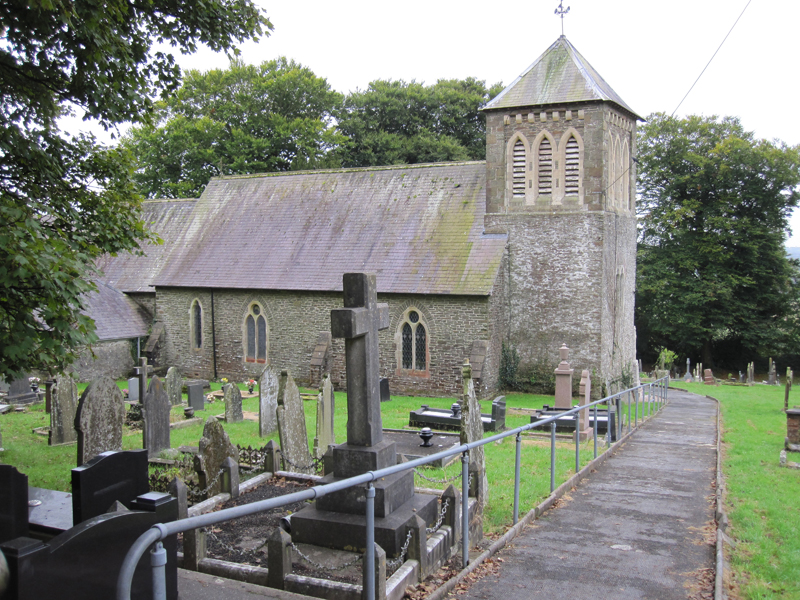 |
| |
| This is still an active church, with bilingual services. Everyone speaks English, but some are more comfortable in Welsh. |
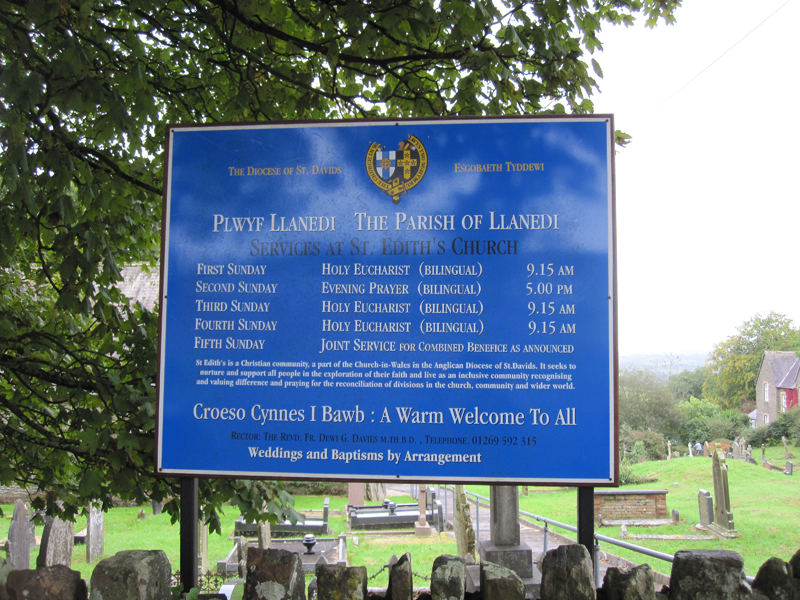 |
| |
The grounds are well-maintained, and many of the graves had flowers on them.
We saw a lot of familiar names on grave stones, but not that I've connected directly to my family yet. |
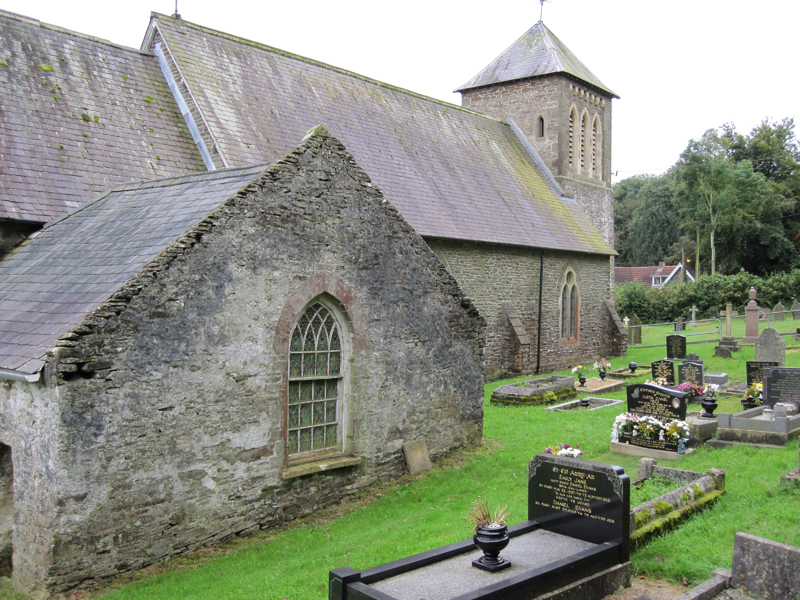 |
| |
| While we were there, a man was working on landscaping at the back of the church. |
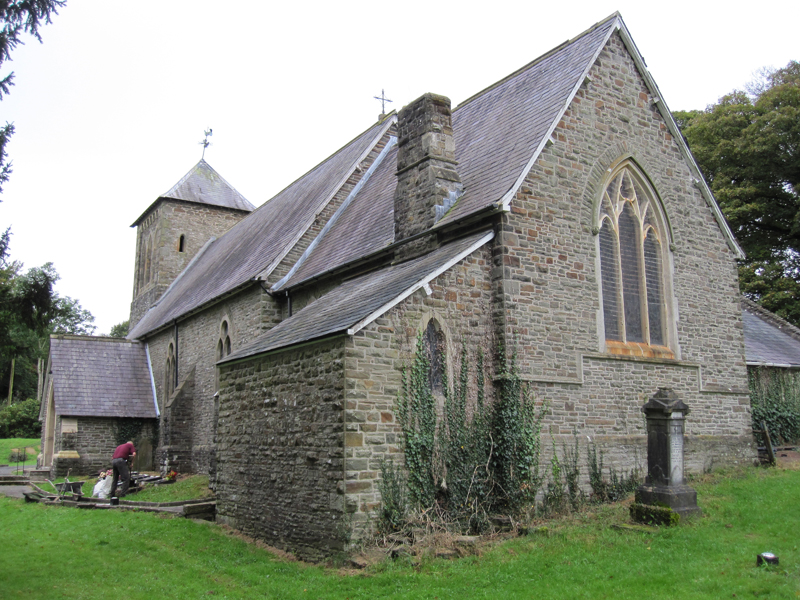 |
| |
| On the way back to the main road through Llanedi, Heol Ebeneser (Ebenezer Road), we stopped to take a picture of the one-lane road to the church. Note (1) that the wheel tracks are near the outside of that one lane, and (2) that there is no shoulder outside the wheel tracks. We were glad we didn't meet anyway going the other way. |
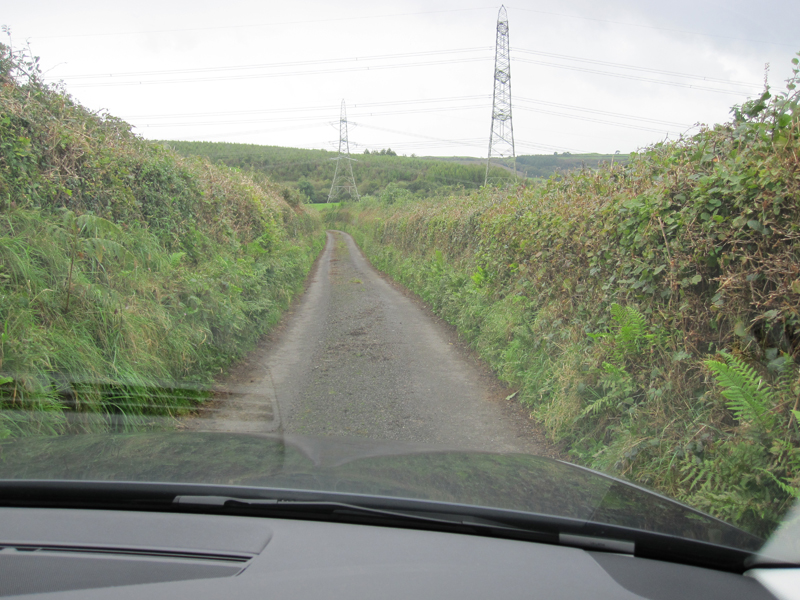 |
| |
We got back onto Ebenezer Road, and found the road to Ty Llwyd Farm. The road is called Heol Ty Llwyd. There aren't any English-only speakers in the area, so no translation is needed on the sign (it's Ty Llwyd Road, of course). And, of course, it's a one-lane road.
After a missed turn (we went too far, and turned around at Sardis) we found Ty Llwyd Farm itself--where my 4xgreat grandfather William Morgan lived until he died in 1835.. |
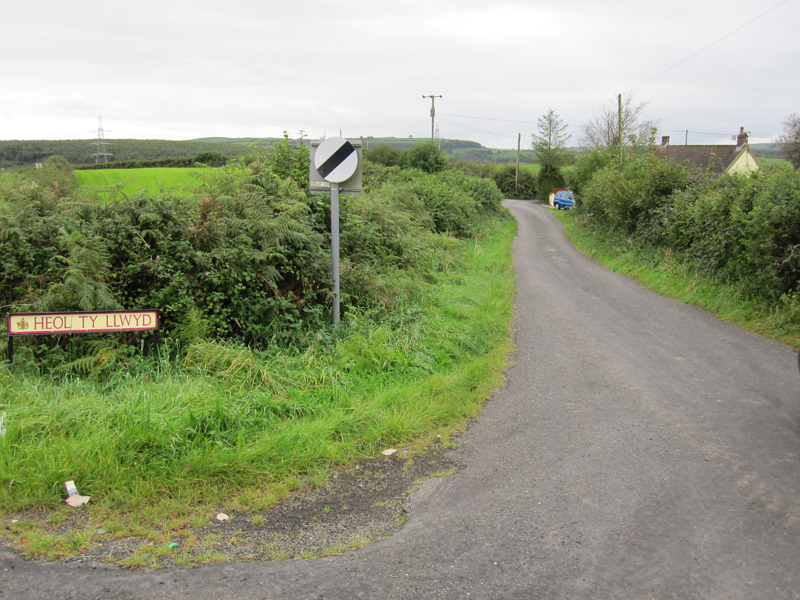 |
| |
Ty Llwyd Farm House. Most of the farm buildings here are much newer, including the house, and the farm is being actively worked.
We knocked on the door of the newer farm house, and were invited in by the woman who lived there. She was still in mourning over the recent death of her husband, but she welcomed us, and gave us pictures of her husband and his grave stone. Her grandson was working out on the farm, but came in and greeted us.
There may have been a Morgan relative living on the farm since William Morgan in the 19th century. |
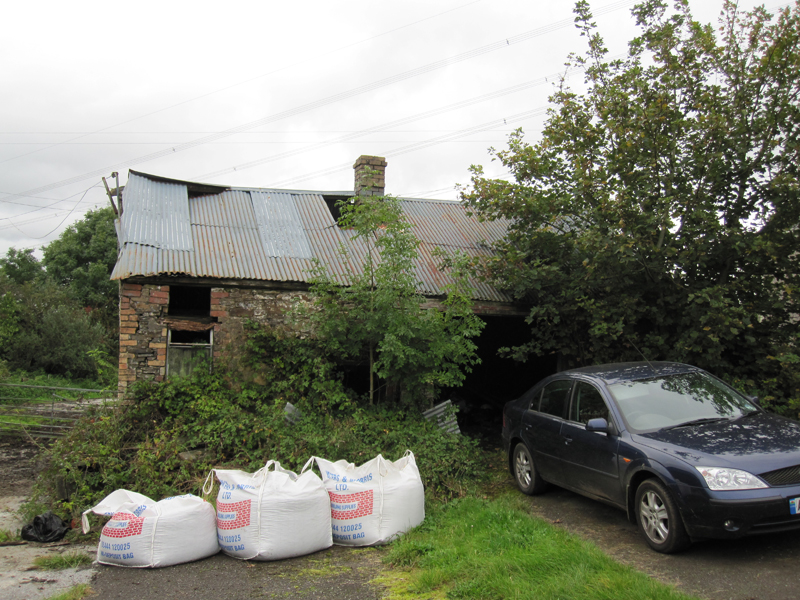 |
| |
| I don't know when the original farm house was first built, but at least part of it is more than 170 years old. |
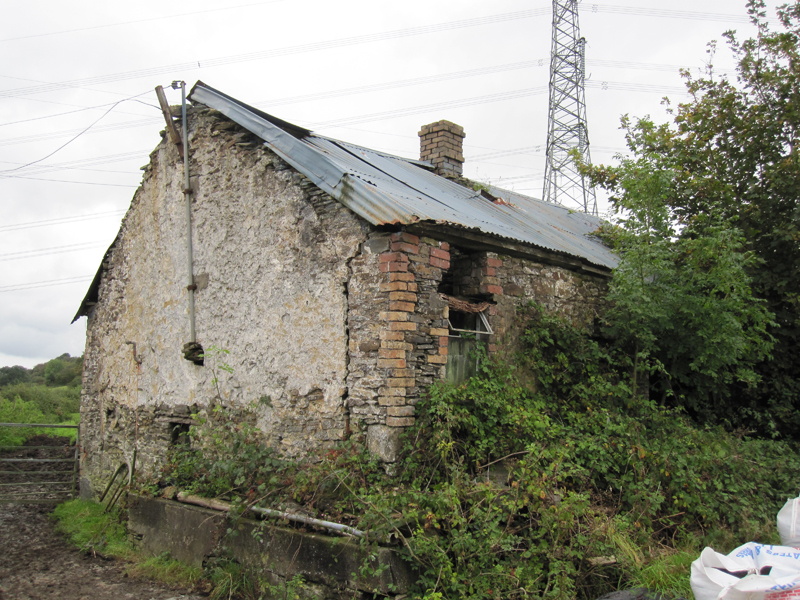 |
| |
| We next headed west, toward Trelech (on the northwestern side of Carmarthenshire, almost in Pembrokeshire. On the way, we took this picture of a typical hillside dotted with sheep. |
 |
| |
| Half way to Trelech, we passed by Carmarthen, the largest town in Carmarthenshire, and successfully navigated the two roundabouts in the area! |
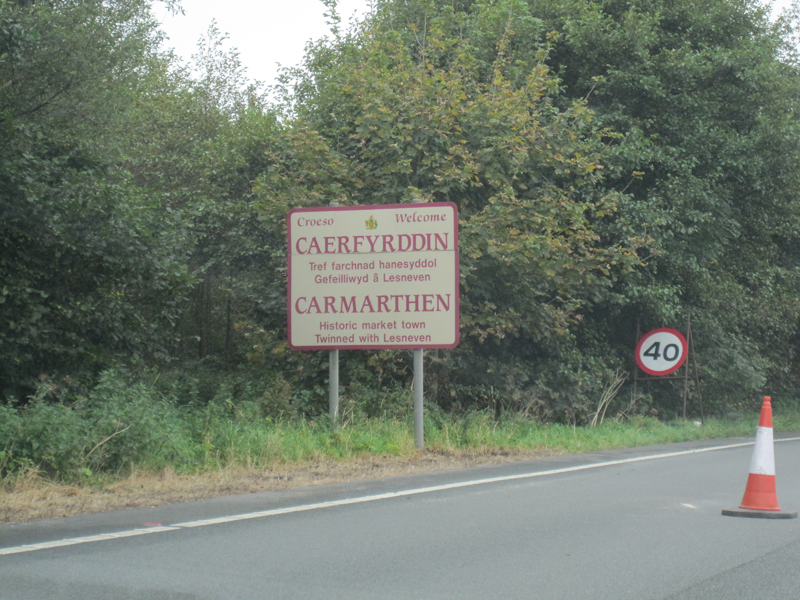 |
| |
Capel-y-Graig in Trelech. Islwyn had offered to meet us at this chapel, in the middle of the village, and suggested we look for his blue car. We found Trelech without too much trouble (I was getting accustomed to narrow roads), but in front of the chapel there were three parked cars...and all were blue. However, when we parked, Islwyn got out of one of them and welcomed us to Wales.
The plaque translates to Independent Church / Chapel of the Rock / Trelech / Established 1670. |
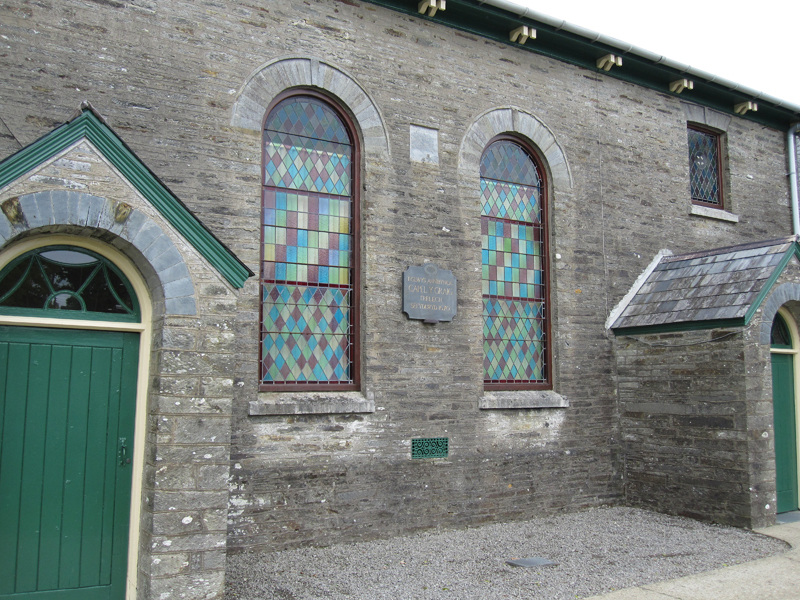 |
| |
| There were many gravestones behind the chapel, the majority of them quite old. I took some pictures, and hope to find some relatives when I am able to decipher them. |
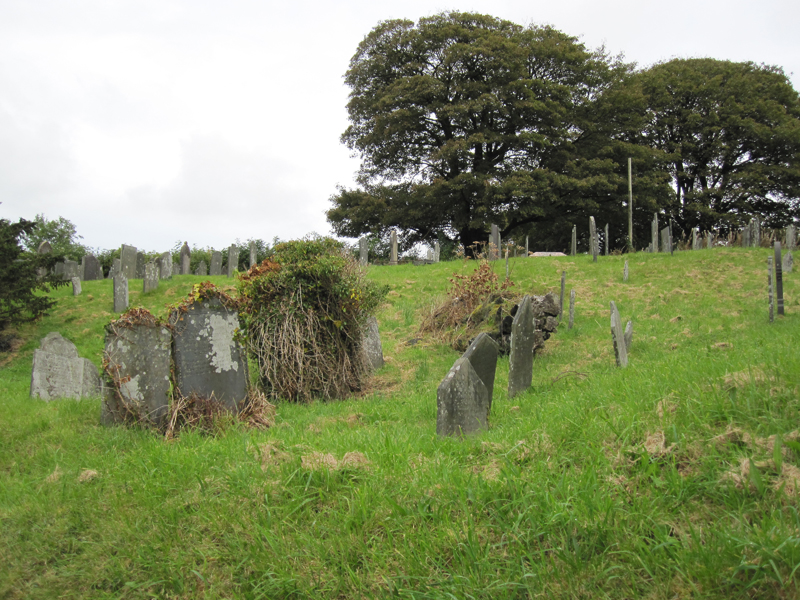 |
| |
| Islwyn and Jennifer. Islwyn knows the rector of the chapel, and has asked her to check her records for Rachel James' family. |
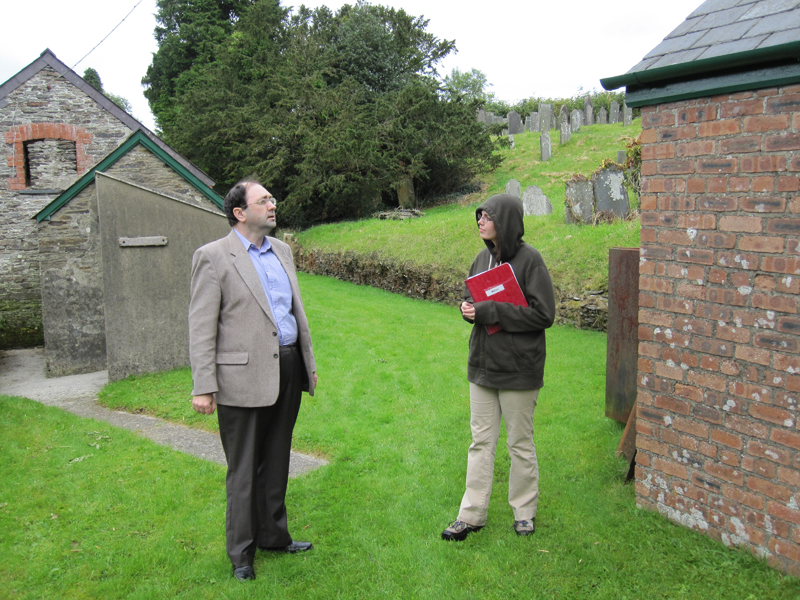 |
| |
We followed Islwyn to his Aunt's house, where we were greeted royally. We became absorbed in getting acquainted, learning family news and history, and much about the surrounding area and the university system in London. For lunch, we enjoyed an amazing array of sandwiches, sausage rolls, cheeses, and other substantial fare, as well as a variety of cakes. Unfortunately, this meant that I forgot to take more pictures of the relatives and surroundings. The lunch table alone would have been worth half a dozen pictures.
Seated here are Islwyn's mother and aunt, and standing behind them are Cousin Ronald and his wife, Islwyn, and Jennifer. Another aunt of Islwyn's lives nearby, but was under the weather and unable to join us. |
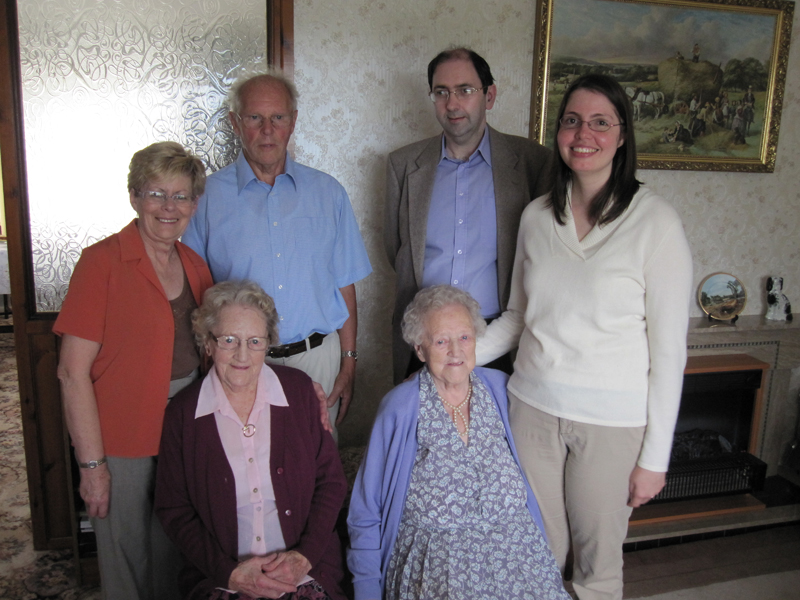 |
| |
After lunch, Islwyn took us on a tour of family sites in the area. First we went to Rhos Fach (the farm house where Caleb Rees was born). I was very glad that Islwyn was driving, both because he knew where he was going, and because the roads were typically narrow.
This is Rhos Fach. The 1841 census listed my 3xGreat Grandparents William and Mary Rees and ten children, including my 2xGreat Grandfather Caleb Rees at Rhos Fach. |
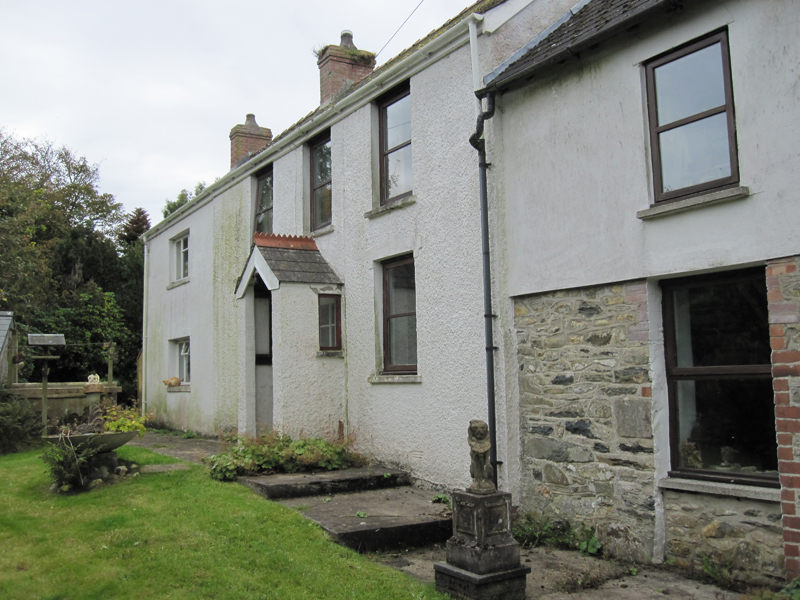 |
| |
Donald Jellyman, a retired teacher and artist, has lived at Rhos Fach since about 1980. Until she died recently, his wife Cecily was a famous textile designer, and some of her work was displayed in the house, along with his.
Islwyn had let him know we were coming, and he was glad to give us a tour.
|
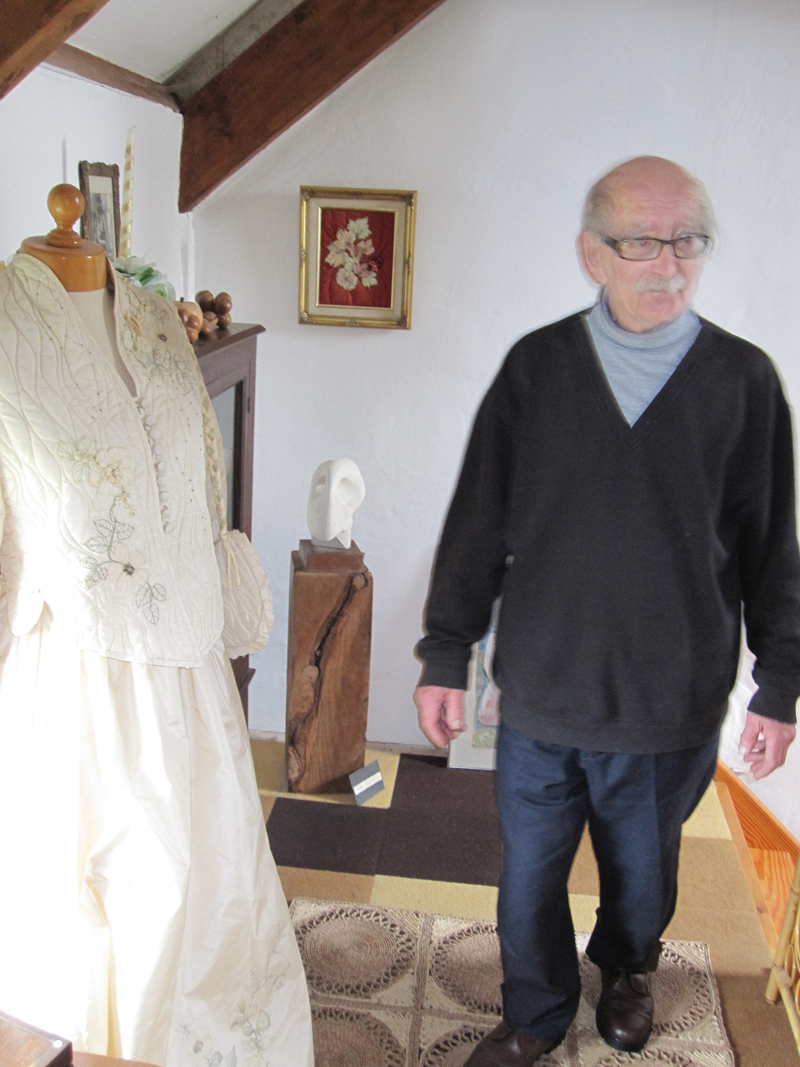 |
| |
| This is probably one of Cecily's works. The trees and sheep are sewn onto the fabric backing. The scene could easily be of the hills around Rhos Fach. |
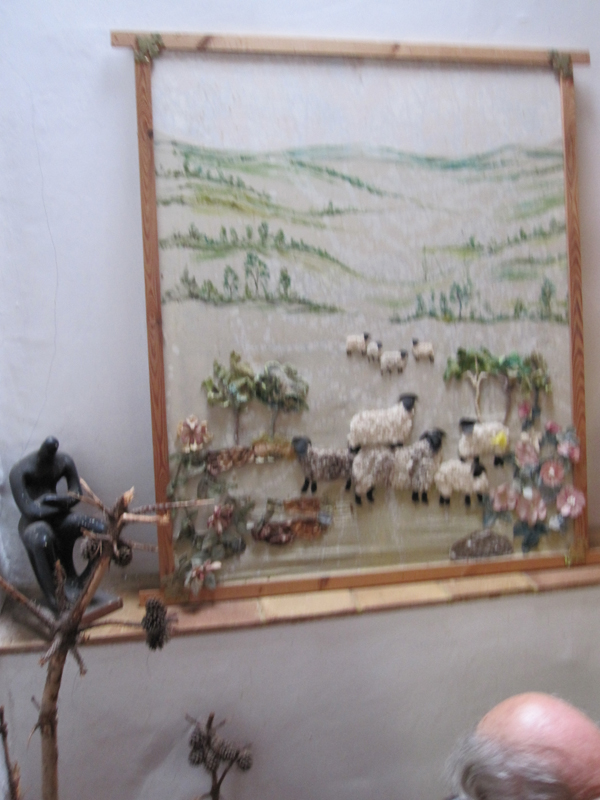 |
| |
| Cousin Ronald, Jennifer, and Mr. Jellyman on the other side of Rhos Fach. |
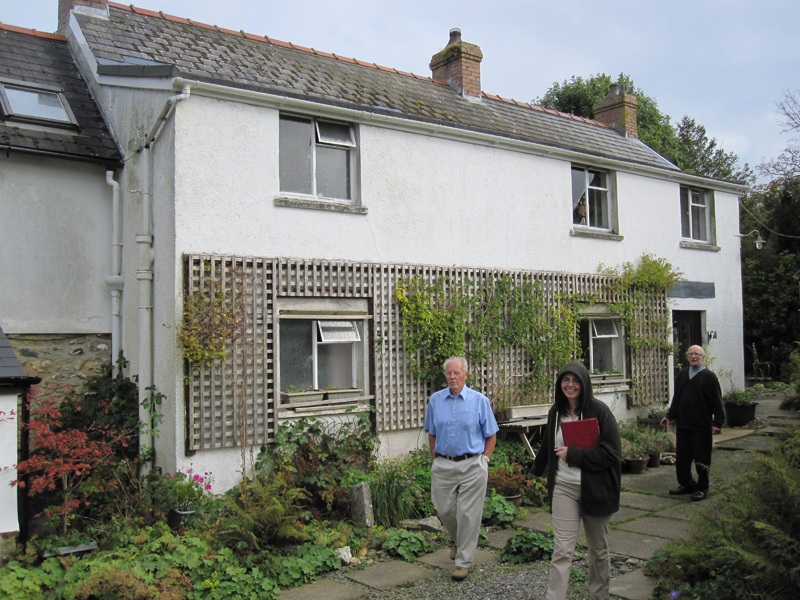 |
| |
| The Jellymans made a number of improvements to the old house, expanding and modernizing it. |
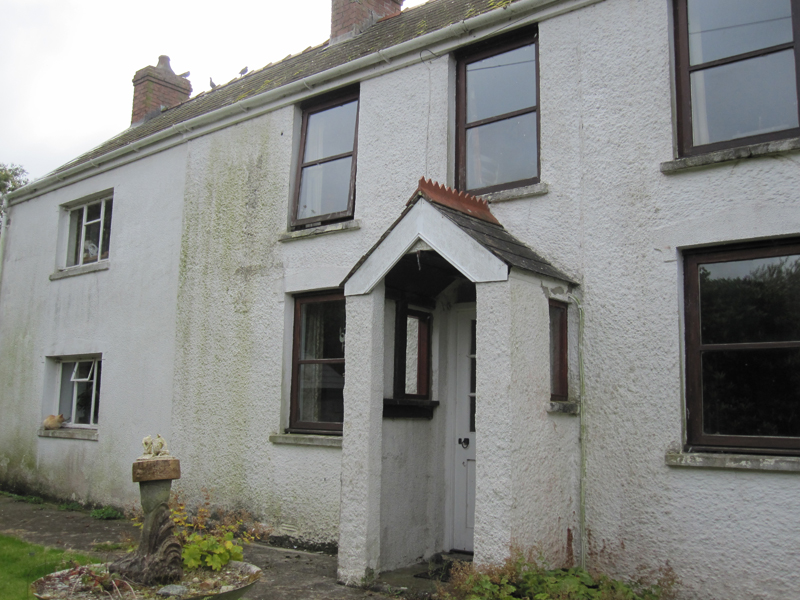 |
| |
|
This is the same house, in about 1865. Standing in the doorway are great-grandchildren of William and Mary Rees.
If this hadn't been continuously occupied by Rees descendants and friends ever since, it would be hard to believe it was the same house. |
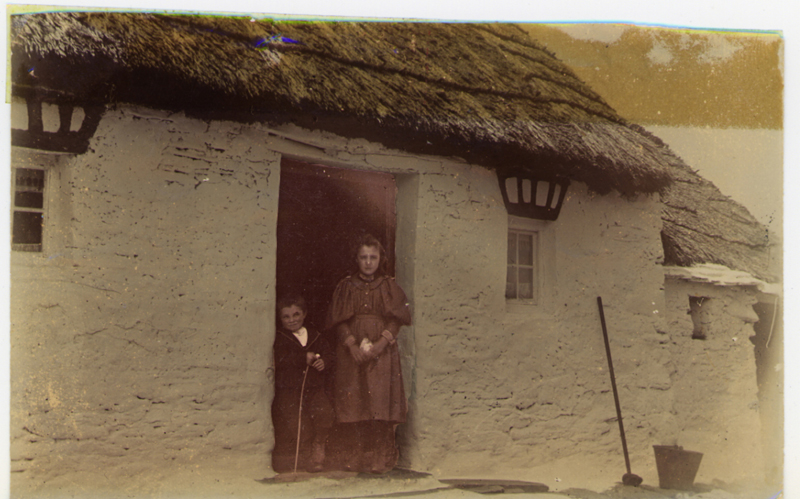 height="600"> height="600"> |
| |
| After Rhos Fach Islwyn drove us to Eglwyswen (also known as Whitechurch). This is no longer a consecrated church, having been sold for use as a private residence. The terms of the sale included provisions for not disturbing the nearby grave stones. |
 |
| |
| Just past the front left corner of the building is the marker for the graves of William and Mary Rees, my 3xGreat grandparents from nearby Rhos Fach. Unfortunately, a footpath around the building has encroached on the graves. |
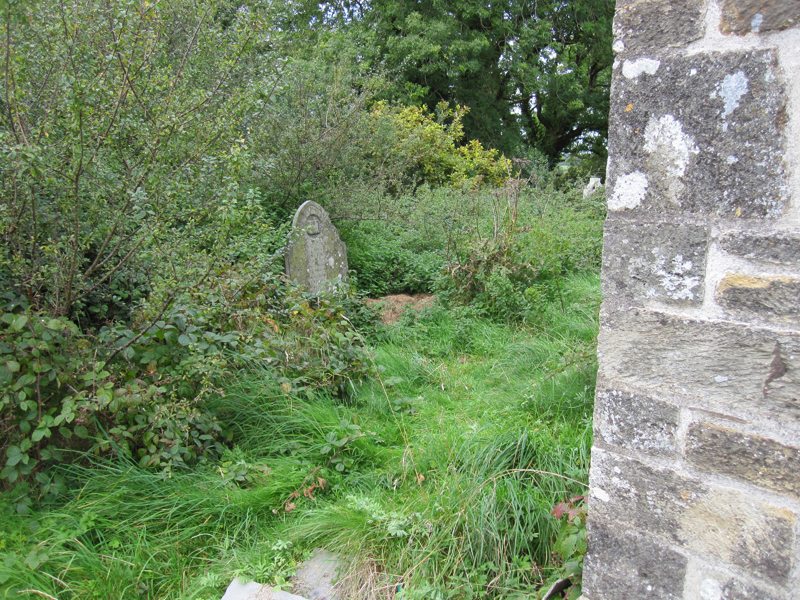 |
| |
| Close up of the grave stone. |
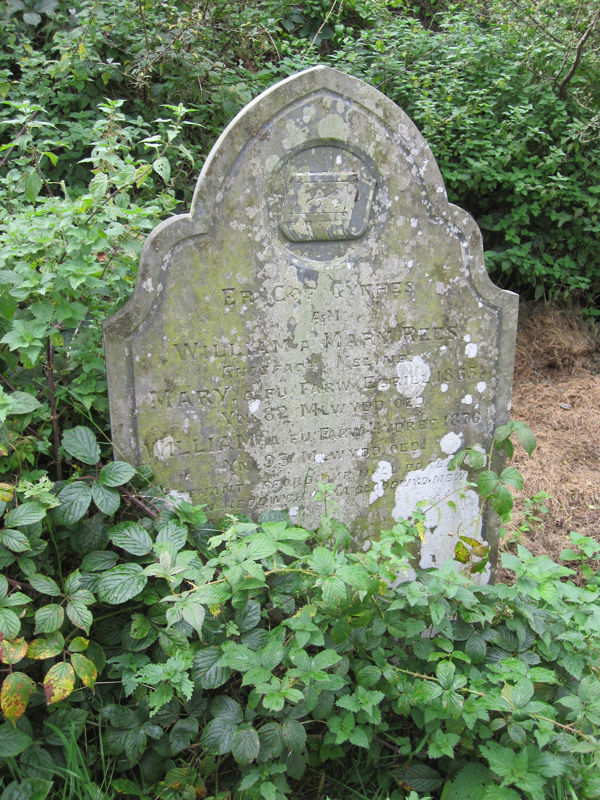 |
| |
| The more distant grave stones are becoming overgrown with vines. |
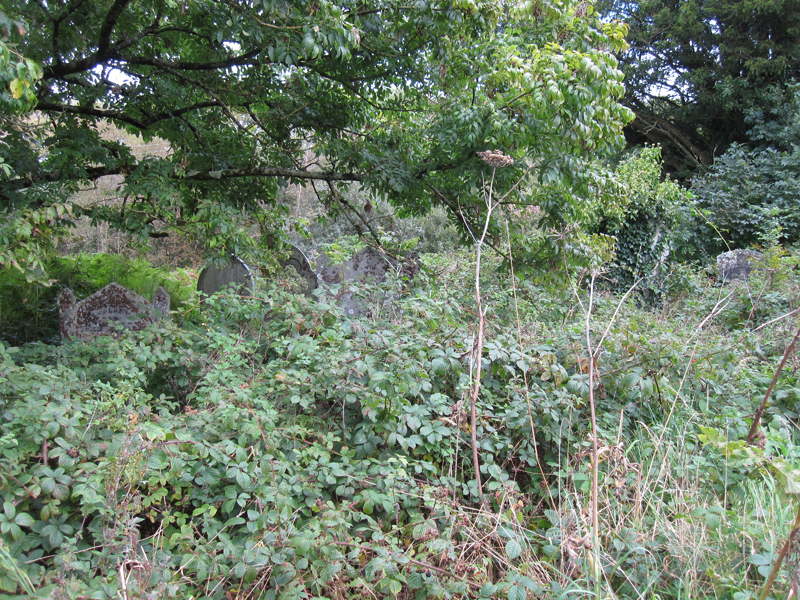 |
| |
| The Eglwyswen area included a "kissing gate" designed to allow humans access, but not aninals. Jennifer demonstrates how she can push the gate to the far side and enter the little alcove opposite the hinge. She then pushes the gate to the opposite position, and can exit. |
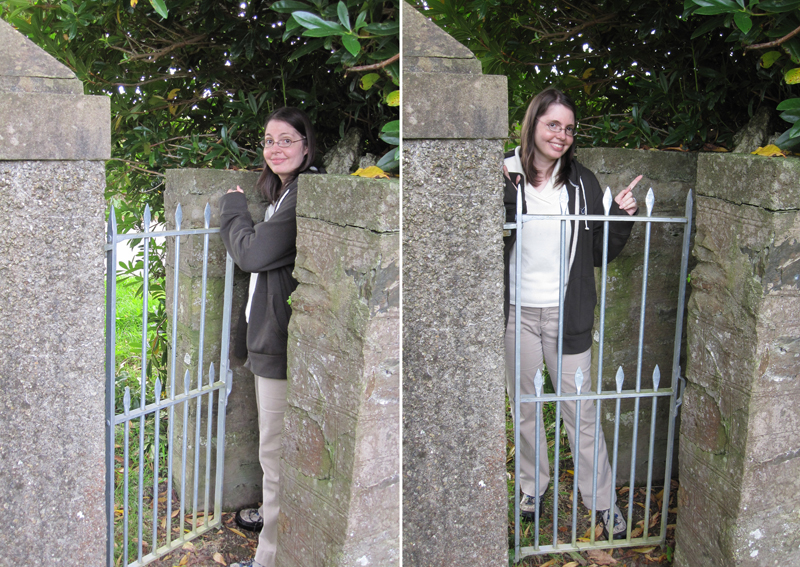 |
| |
| Our next stop after Eglwyswen was Ronald's vacation home nearby. This sun room addition is getting a floor heating system installed; the tubing for the warm fluid can be seen on the red under-floor. |
 |
| |
| A more complete view of Ronald's house. He has to follow a number of regulations designed to enable improvements and modernization while maintaining the general appearance from the road. |
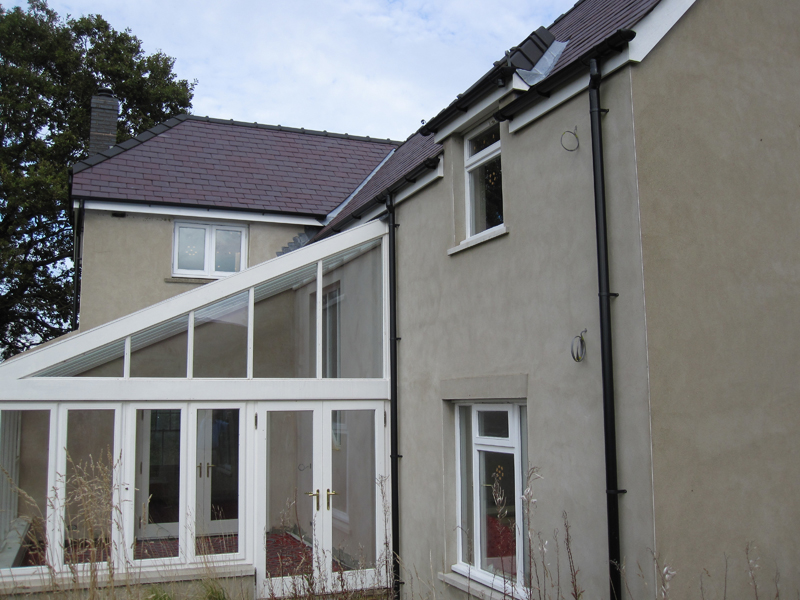 |
| |
| Looking south from Ronald's house, we again see Foel Drygarn in the near distance. |
 |
| |
| And to the right (west) of Foel Drygarn are more of the Preseli hills. That part of the Preseli hills is the source of the Preseli Bluestones that constitute the upper (horizontal) components of Stone Henge, 240 miles to the west. |
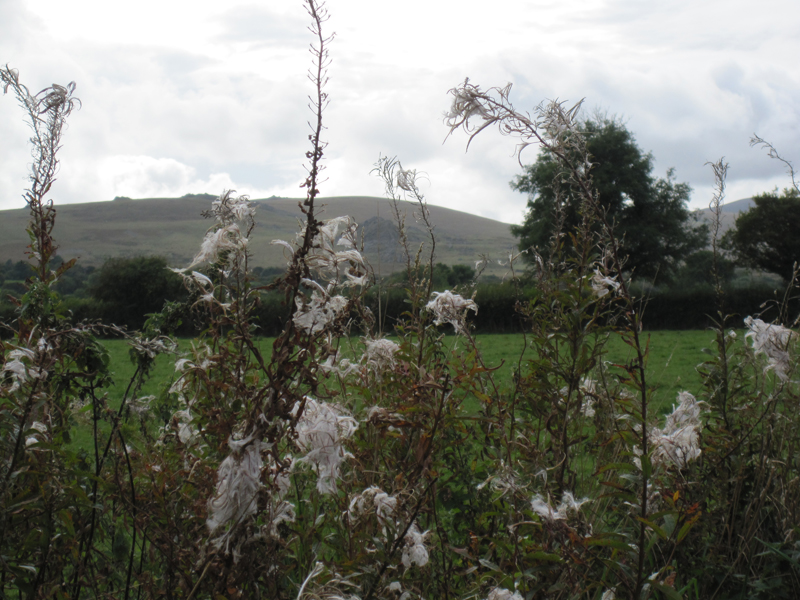 |
| |
| Our next stop was Penygroes, the chapel counterpart of the Whitechurch. The sign above Islwyn translates to Penygroes Independent Meeting House (Chapel) 1785. |
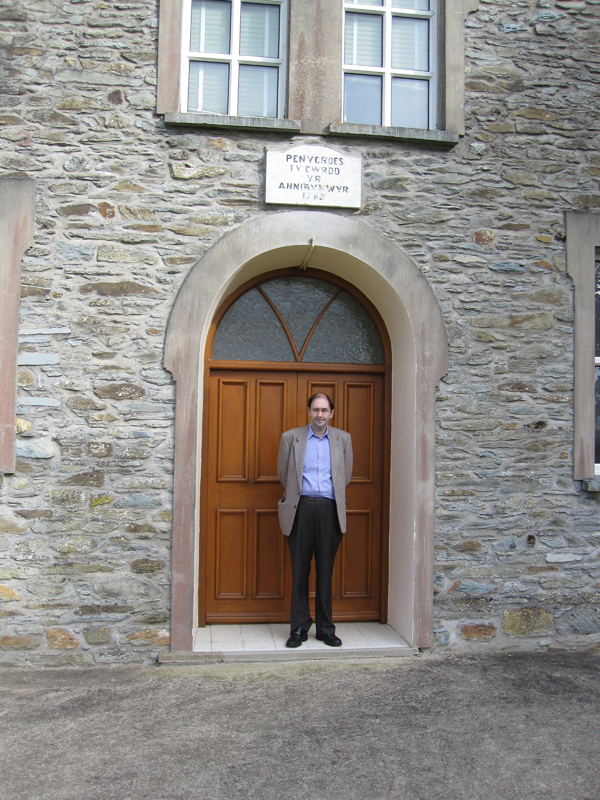 |
| |
As Islwyn sometimes conducts services here, Islwyn was able to show us around inside.
The hymnal includes a song (Nor shall his leaf wither, by Ann Griffiths) translated from Welsh into English by the 3rd Caleb Rees (the same one who sent the picture of Rhos Fach to my great uncle. |
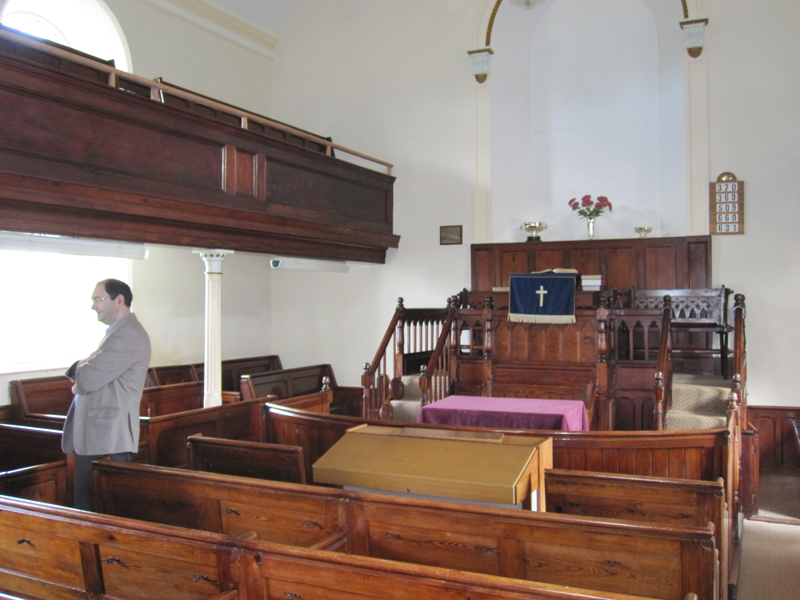 |
| |
| The graveyard at Penygroes is in excellent condition, as befits a still-active chapel. The only concern seemed to be that in their zeal to keep the area well-groomed, the groundskeepers had moved some of the headstones from the original locations to place that allowed more convenient mowing. |
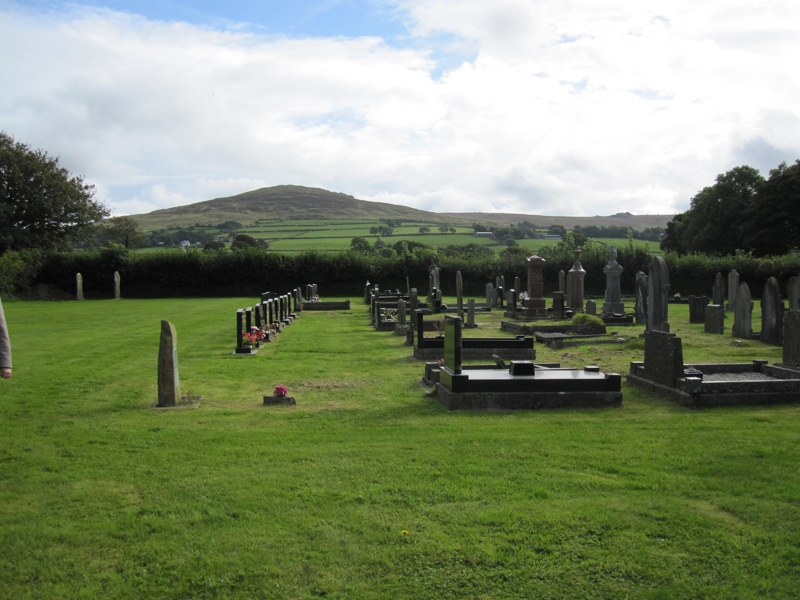 |
| |
| Catherine Rees was an older sister of my great-great grandfather Caleb Rees. |
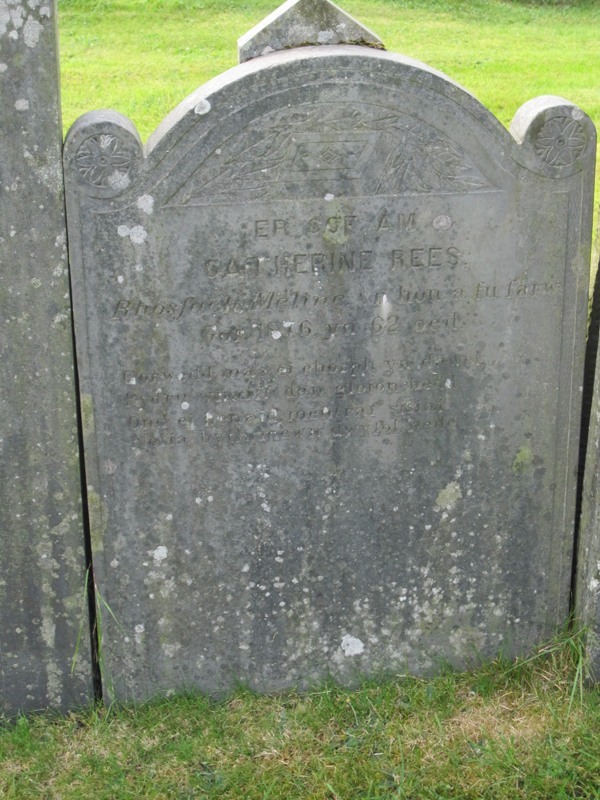 |
| |
| Caleb & Laura Rees. This is the same Caleb Rees who supplied the picture of Rhos Fach. He and his wife Laura were both distinguished professionals. |
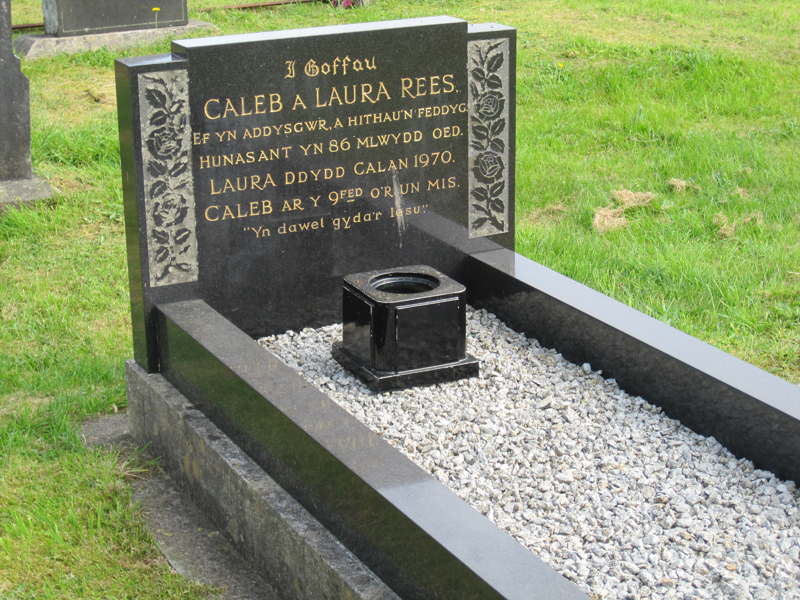 |
| |
| Gwilym and Anne Rees (Gwilym is a Welsh form of William)...Gwilym is a great grandson of the William Rees of Rhos Fach. |
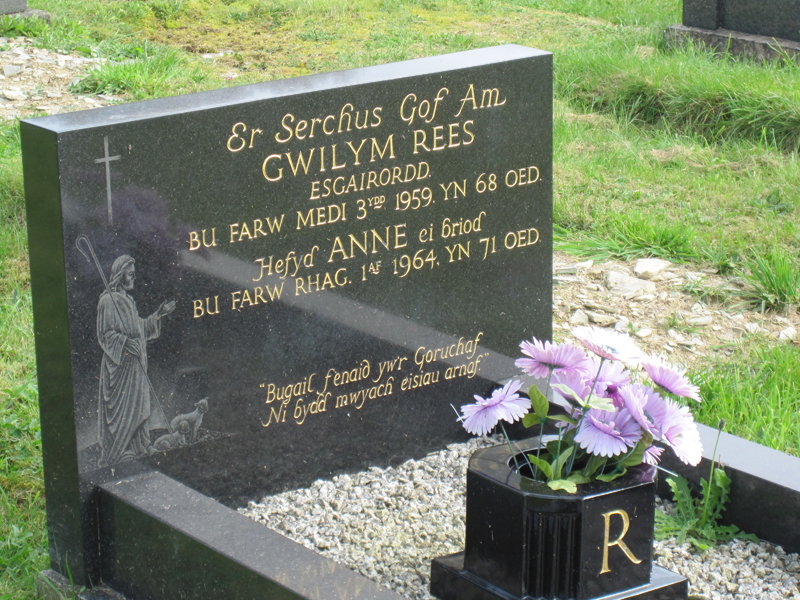 |
| |
| Eilir Rees was a son of Gwilym Rees (previous picture) and my 3rd cousin, once removed. |
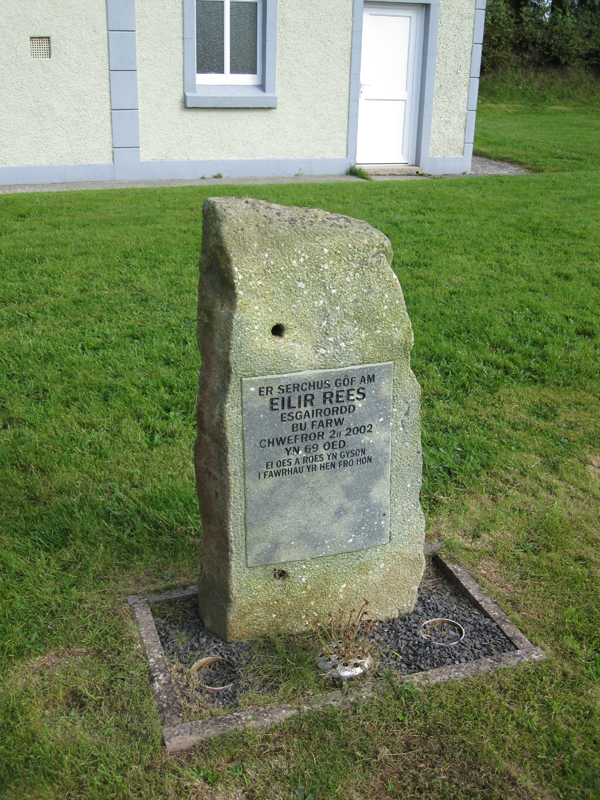 |
| |
| Jacob and Hannah Selby. Hannah was a great granddaughter of Willim Rees of Rhos Fach, and Islwyn's grandmother. |
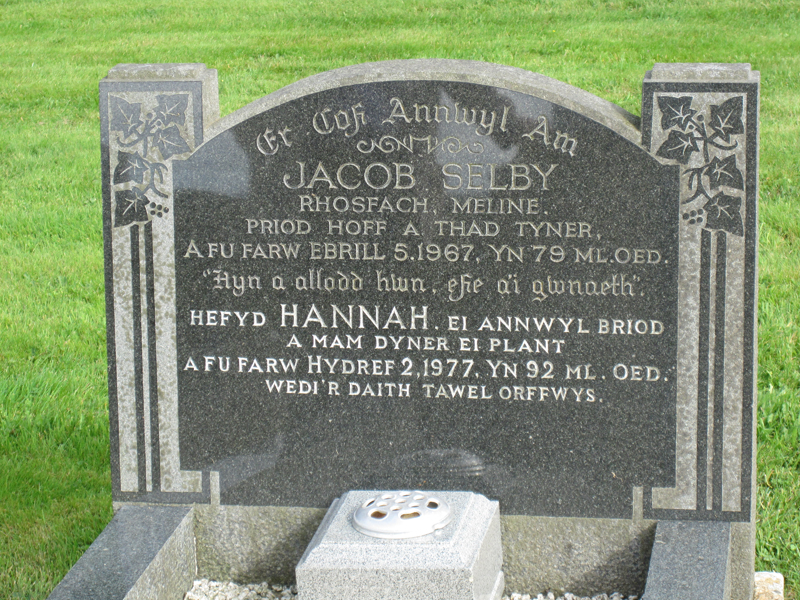 |
| |
| Again, Foel Drygarn looms up on the horizon. I think of it as the rural counterpart of St. Paul's Cathedral in London. It's a landmark, nearly always visible, and has ancient burial mounds at the top. |
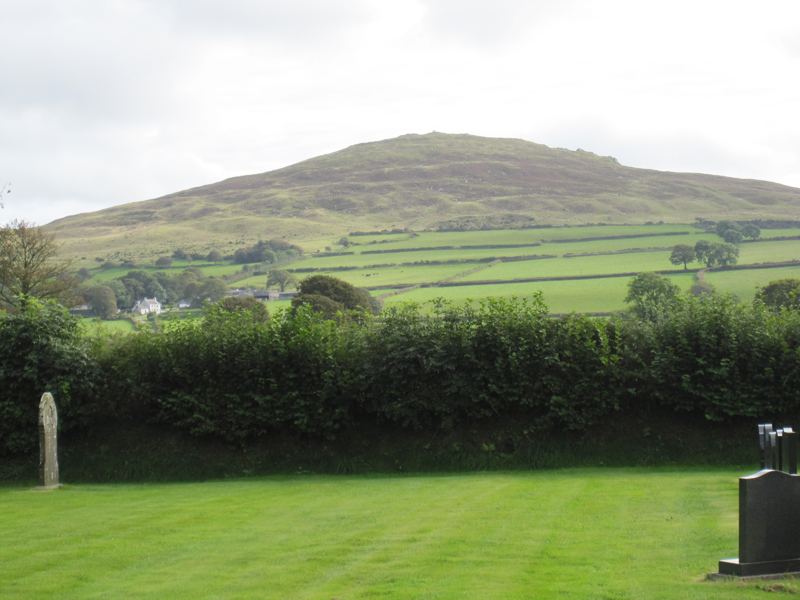 |
| |
Felin Uchaff (as recorded on the sign to which Jennifer is pointing). It means Upper Mill and was one of two mills here at one time.
Stephen Rees (one of the first Caleb Rees' brothers) and a nunmber of his descendents lived here. |
 |
| |
The downhill side of Felin Uchaff. Jennifer admired the multi-colored hydrangeas. All around Wales, the late-September days were b rightened by many flowers.
There's a little garden path downhill past the hydrangeas... |
 |
| |
...no, it's not a garden path. It's the road.
We went on back to the Auntie's house for afternoon tea (with cake and snacks, of course).
Finally, after getting some route advice from Islwyn, we started back to Llanedi. |
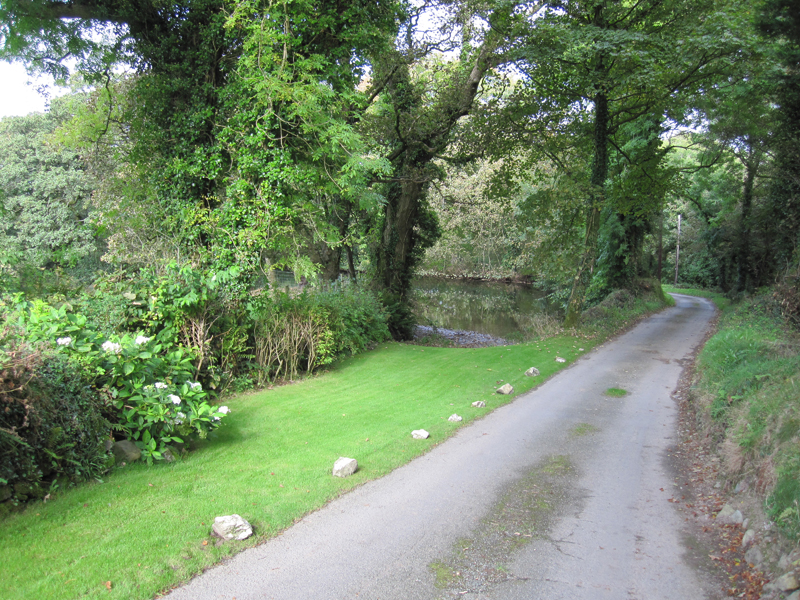 |
| |
| We took several wrong turns at roundabouts, and were glad to finally see the sign for Heol Eneneser. Our B&B / Tavern / Restaurant was on Ebenezer Road. |
 |
| |
And just before the B&B we were welcomed to Llanedi.
It was a long and very full day, but very enjoyable and worthwhile. We rested up, ate a little supper in the restaurant downstairs, and slept well. |
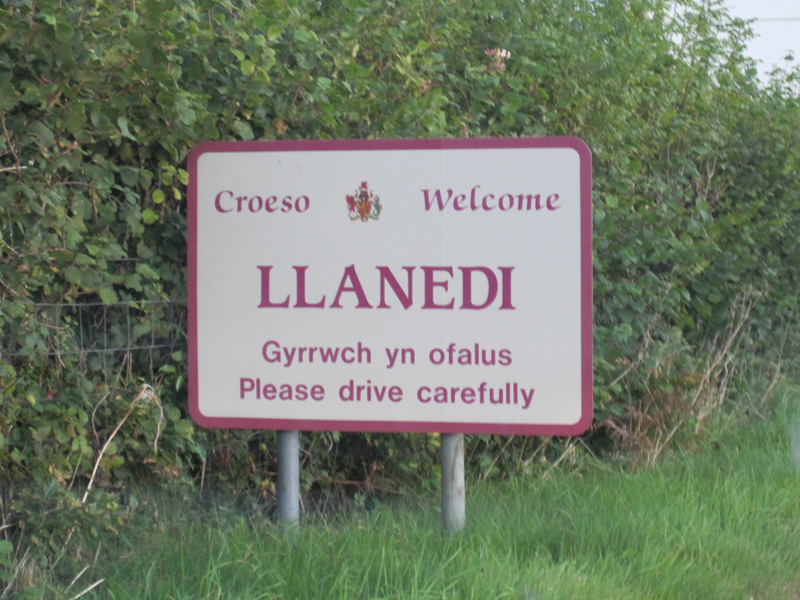 |
| |
 height="600">
height="600">